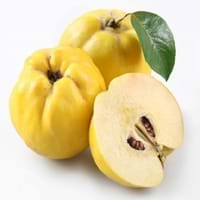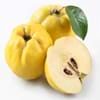Health Benefits
Cancer prevention, Cures gastro-intestinal troubles, Reduces nervous tension, Ulcer prevention
Anti depressant, Boosts immune system, Cancer prevention, Heart care, Reduces stress
General Benefits
Anti oxidant properties, Anti-inflammatory properties, Boosts immune system, Controls blood pressure, Digestive aid, Eye care, Helps in weight loss, Improves blood circulation, Maintains healthy cholesterol level
Anti oxidant properties, Anti-inflammatory properties, Boosts immune system, Controls blood pressure, Controls blood sugar levels, Digestive aid, Flu treatment, Strengthens bones
Skin Benefits
Anti-aging benefits, Reduces wrinkles
Anti-aging benefits, Brightens and lightens complexion
Hair Benefits
Regulates hair growth
Promotes longer and healthier hair, Protects hair
Allergy Symptoms
NA
Diarrhea, Headaches, Hives, Nasal congestion, Red rash, Runny nose, Vomiting
Side Effects
Allergic reaction
Affects blood glucose levels, Nausea, Stomach pain
Best Time to Eat
As a snack in the late afternoon, Don't consume at night and before bed, Eat the fresh ones, avoid mixing with any other foods, don't eat after meal., Morning time (before lunch)
Along with meal, As a snack in the late afternoon, Don't consume at night and before bed, Morning time (before lunch)
Vitamin B5 (Pantothenic Acid)
Vitamin C (Ascorbic Acid)
Calories in Fresh Fruit with Peel
Not Available
Calories in Fresh Fruit without Peel
Not Available
Calories in Frozen Form
Not Available
Calories in Canned Form
Not Available
Not Available
Calories in Pie
Not Available
Type
Tree fruit
Tree fruit, Tropical
Varieties
Meech’s Prolific, Lusitanica, Champion and Vranja AGM
D24, D99 (Gob kecil), D123 (Chanee), D145 (Beserah), D158 (Gan Yau), D159 (Monthong), D169 (Tok Litok), D188, D189, D190, D163 (Hor Lor) and D164 (Ang Bak)
Color
Green, Yellow
Green
Inside Color
White
Yellow
Origin
Iran, South-West Asia, Turkey
South-Eastern Asia
Grows on
Trees
Not Available
Soil Type
Loam, Well-drained
Clay
Climatic Conditions
Warm
Hot, Humid
Facts about
- Due to its strong & fruity aroma, brides consumed quince to ensure "perfumed lips".
- It is also called as ‘Pear of Cydonia’, being native to Caucasus and Iran.
- They call it as the ‘golden apple’ of Greek Mythology.
- 1 kg of durian contains 1350 calories which may cause weight gain.
- It may have a hyperthermic effect on the body, making you feel warmer.
- Study shows that durian has an ability to reduce infertility in men & women.
Top Producer
Turkey
Thailand
Other Countries
Algeria, Argentina, Azerbaijan, China, Iran, Morocco, Serbia, Spain, Uzbekistan
Indonesia, Malaysia, Philippines
Top Importer
United States of America
China
Top Exporter
Argentina
Thailand
Botanical Name
Cydonia oblonga
Durio zibethinus
Synonym
C. vulgaris
Lahia Hassk
Subkingdom
Tracheobionta
Tracheobionta
Division
Magnoliophyta
Magnoliophyta
Class
Magnoliopsida
Magnoliopsida
Subclass
Rosidae
Dillenhidae
Family
Rosaceae
Malvaceae
Species
C. oblonga
D. zibethinus
Generic Group
Rose
Not Available
Difference Between Quince and Durian
We might think that Quince and Durian are similar with respect to nutritional value and health benefits. But the nutrient content of both fruits is different. Quince and Durian Facts such as their taste, shape, color, and size are also distinct. The difference between Quince and Durian is explained here.
The amount of calories in 100 gm of fresh Quince and Durian with peel is 57.00 kcal and Not Available and the amount of calories without peel is Not Available and 147.00 kcal respectively. Thus, Quince and Durian belong to and category.These fruits might or might not differ with respect to their scientific classification. The order of Quince and Durian is Rosales and Malvales respectively. Quince belongs to Rosaceae family and Durian belongs to Malvaceae family. Quince belongs to Cydonia genus of C. oblonga species and Durian belongs to Durio genus of D. zibethinus species. Beings plants, both fruits belong to Plantae Kingdom.









